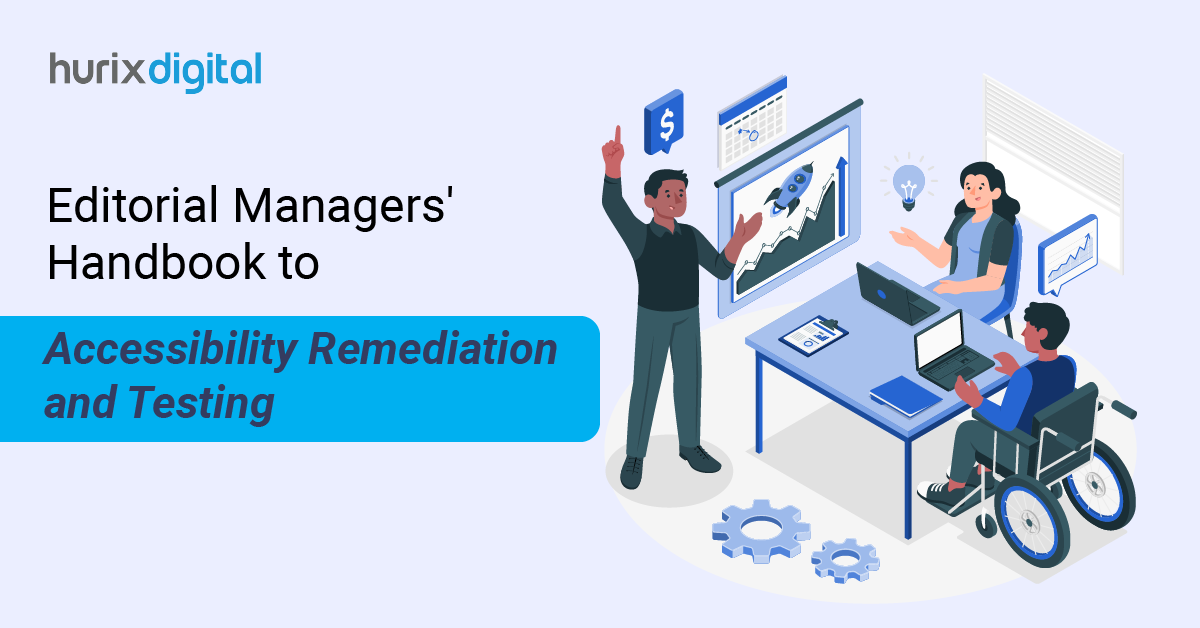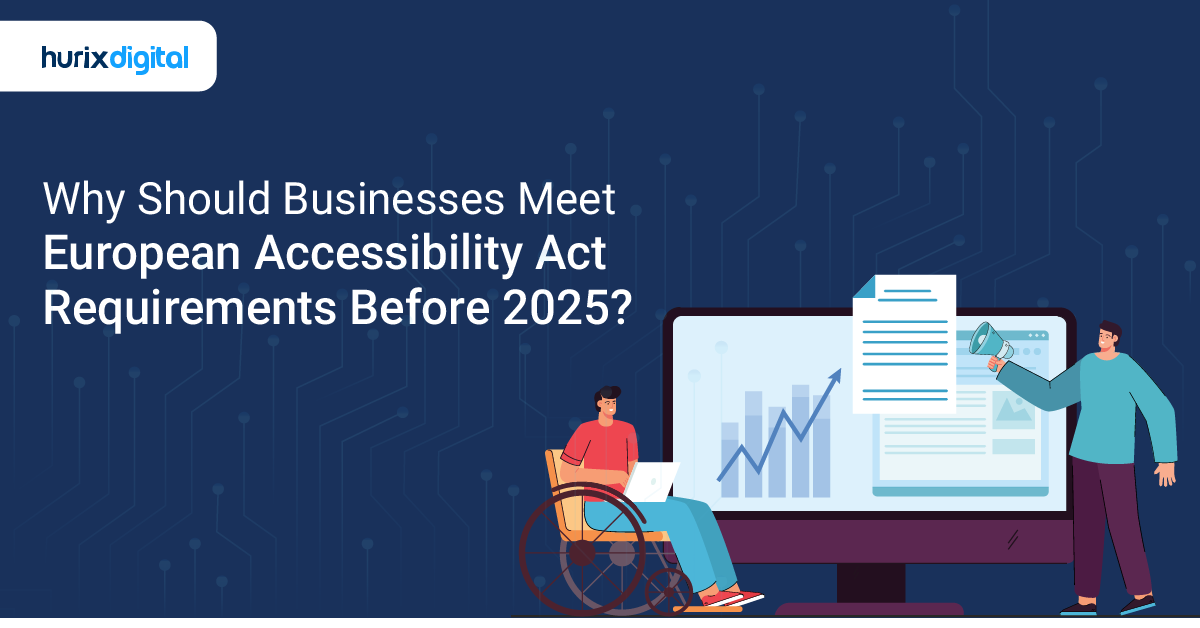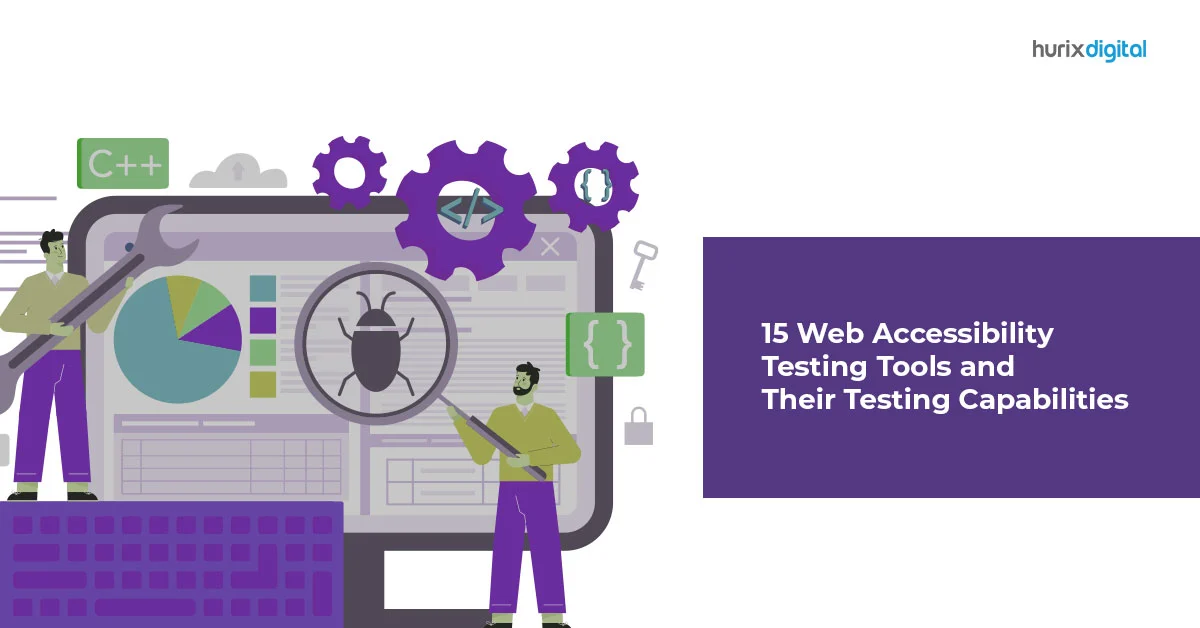How Does Accessibility Testing Improve Your Website Performance?
Web accessibility is a key focus in website development, ensuring that websites, tools, and applications are accessible to users with disabilities, such as hearing loss, blindness, or cognitive impairments.
Developers can take advantage of assistive technologies, such as captioned films for individuals with hearing impairments and screen readers for the illiterate. Technologies that display text and audio concurrently can also benefit people with dyslexia.
The 1990 Americans with Impairments Act (ADA) requires equitable access to public services and forbids discrimination against those with impairments. Although web accessibility isn’t officially covered, many public service websites adhere to ADA regulations. This strategy is currently widely used worldwide to guarantee inclusive online experiences.
Table of Contents:
- How Does Accessibility Testing Improve Your Website Performance?
- Benefits of Hiring a Web Accessibility Testing Service Provider
- How to Leverage Web Accessibility to Build Stronger Customer Loyalty and Enhance Your Brand?
- To Wrap Up
How Does Accessibility Testing Improve Your Website Performance?
Accessibility is a means to avoid discrimination and provide access to information to all. Suppose you have created and developed your website. In that case, you may use the service of an accessibility testing service provider to boost your website performance and ensure it follows all the applicable guidelines.
A reliable accessibility testing service provider with sound knowledge of Web Content Accessibility Guidelines (WCAG)—W3C’s WCAG 1.0/WCAG 2.0—will ensure that your website follows all the latest standards for digital accessibility of web content on desktops, laptops, tablets, and mobile phones.
A thorough website accessibility check by an accessibility test service provider is important, as it is important to note that web accessibility testing is not just limited to the website but includes mobile/tablet applications as well. Here is how to improve the accessibility of a website:
- Perceivable: The user interface is easy to use, and the information flow is clear and perceivable by the user. For instance, alt text is provided for images.
- Operable: This implies that the user interface navigation is usable and operable. As a case point, the website accessibility checker will verify that your website provides keyboard navigation such that every link on the web page can be accessed with a keyboard stroke.
- Understandable: The website needs to have assistive technologies to help people with disabilities access your content. The service provider will also check for other features, such as the type of font and font size, background color, and color of text.
Also Read: How to Make Your Website ADA/WCAG Compliant
Benefits of Hiring a Web Accessibility Testing Service Provider
Below are some key benefits of hiring a web accessibility testing service provider.
1. Extend Your Audience Reach
One key benefit is improving your audience reach by making your website accessible to people with disabilities. While it is near impossible to cater to all types of disabilities, knowing how to improve a website’s accessibility by following accessibility best practices can greatly expand your audience’s reach.
2. Build Your Brand
By ensuring accessible content, you can strengthen your brand and also engage and interact with people. If they are satisfied and impressed by their experience on your inclusive website, they are more likely to turn into your brand evangelists, providing powerful word-of-mouth marketing within their social circles, both online and offline.
3. Improve Your SEO
By following web accessibility checker best practices, you can also ensure that your content is properly indexed by Google, resulting in higher search results listings.
Search engine bots consume content in a way similar to people with disabilities using assistive technologies, and so, with an inclusive website, you will be able to achieve higher visibility.
4. Future-Proof Your Business
As the market environment becomes more politically correct, businesses will sooner or later have to implement web accessibility guidelines. Knowing how to improve web accessibility and then having an accessible website can thus secure your business against future litigation, lawsuits, and fines.
How to Leverage Web Accessibility to Build Stronger Customer Loyalty and Enhance Your Brand?
Here’s how prioritizing web accessibility can enhance customer loyalty and take your digital presence to the next level:
1. Create a Smooth User Experience for Everyone
When you build your website with inclusivity in mind, it tends to provide you a smoother, more intuitive experience for all users.
This includes:
- Responsive Design: Ensure your site adapts well to different devices, benefiting users with varied screen sizes and orientations.
- Keyboard Navigation: Implement features like keyboard-friendly navigation, which also helps people without disabilities who prefer using keyboards.
- Alt Text for Images: Adding descriptive alt text for images helps not only visually impaired users but also enhances your website’s overall accessibility score.
2. Encourage Ethical Engagement
Consumers today are more likely to support brands that demonstrate social responsibility. By incorporating a11y principles into your web design, you show a commitment to inclusivity and equality, values that resonate deeply with modern audiences. This ethical approach fosters stronger emotional connections, turning casual visitors into loyal advocates for your brand.
3. Reduce Abandonment Rates
An inaccessible website frustrates users, leading them to abandon it in favor of competitors who prioritize accessibility.
Consider these practical steps to reduce abandonment rates:
- Optimize Website Load Speed: Accessibility tools like proper coding and optimized media ensure faster load times.
- Offer Readable Content: Use simple language, readable fonts, and clear headings to keep users engaged.
- Simplify Forms: Ensure that all forms on your site are easy to navigate with assistive tools. These measures are essential components of digital accessibility, making users more likely to stay on your site and complete desired actions.
4. Boost Word-of-Mouth Marketing
Satisfied users are more likely to recommend your site to their friends and family, especially within communities that face similar accessibility challenges.
Consider this chain reaction:
- A user with a hearing impairment experiences seamless video captions on your site.
- They recommend your brand to their network, which appreciates the accessible design.
- Your business gains organic reach and a reputation for inclusivity.
This ripple effect can significantly enhance brand loyalty while promoting awareness of a11y principles.
5. Stay Ahead of Regulations
Loyal customers trust brands that demonstrate long-term stability and foresight. By following the Web Content Accessibility Guidelines (WCAG) and learning how to improve a website’s accessibility, you not only comply with existing regulations but also future-proof your digital presence. This proactive approach signals reliability, fostering customer loyalty in the process.
Also Read: The Business Benefits of Accessibility for Publishers
To Wrap Up
Even if voice search and touchscreens become common, following A11y principles and learning how to improve a site’s accessibility will create meaningful change and enhance any company’s visibility.
Digital is set to be a wise investment in a time when inclusivity is the word on everyone’s lips. It is necessary to remain competitive and keep pace with the future.
Hurix Digital is a global leader in the digital transformation value chain, providing state-of-the-art solutions in web accessibility services.
With deep knowledge of WCAG guidelines and advanced testing tools, we facilitate actions transforming traditional businesses into digitally inclusive organizations ready for all users, including users with disabilities. Reach out to our team to find out how we can empower your brand to lead with accessibility and inclusivity.

Vice President – Digital Content Transformation. He is PMP, CSM, and CPACC certified and has 20+ years of experience in Project Management, Delivery Management, and managing the Offshore Development Centre (ODC).







